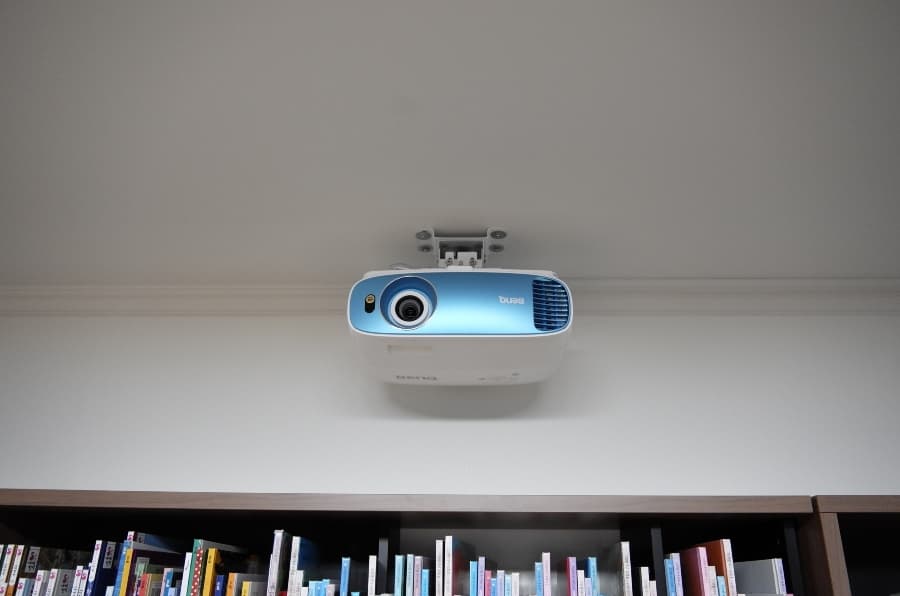
DLP vs. LCD vs. LCoS: Understanding the Different Types of Projectors
Projectors have been around for quite some time now, so they aren’t exactly new in the market. As you already know, these devices are used for projecting large images on virtually any surface you can think of, hence the name. Old slide and 35mm film projectors were easy to understand; you had a light bulb, a film or a slide, and a lens.
But when it comes to new digital types of projectors, it can get a little confusing if you aren’t that tech-savvy. Therefore, in this article, we’ll help you understand the main difference between DLP, LCD, and LCoS projectors, so let’s dive right in.
How Does a DLP Projector Work?
When it comes to these projectors, DLP stands for “digital light processing.” This technology uses chips with tiny mirrors that turn away from or towards the light to reflect it onto your makeshift screen. To generate sequential colors, the DLP projectors typically use a physical spinning color wheel that’s full of color filters.
The light output on these projectors tends to be strong, making them quite suitable for rooms with ambient lighting, such as conference rooms and classrooms. Also, the color accuracy, even though it varies by device, is often much better with DLP projectors than with other types in the market.
Most of these devices offer sharp and crisp images when it comes to fast-motion sequences without any noticeable motion blur, which is great for sports and action films. You can find DLP projectors that use one or three different chips, one for each primary color.
With some single-chip projectors, you might experience artifacts where brighter objects might leave a light trail, but this is rarely the case with three-chip projectors.
How Does an LCD Projector Work?
LCD, or liquid crystal display, is a technology that’s been around for quite some time, and it’s very common in computer monitors and TVs. But it’s not exclusive to these displays, and it’s also very popular and commonly used when it comes to projectors.
LCD projectors use three LCD panels, and each one of them casts an image using one of the primary colors: green, red, and blue. To display the image without any loss of color, all three panels are projected simultaneously.
The lamp life of LCD projectors is generally higher when compared to DLP projectors, and because these projectors don’t use any moving parts, they’re quite inexpensive to operate. When it comes to image quality, the color accuracy is great, rainbow artifacts are barely noticeable, and black levels are pretty good.
Although its light output is pretty high, the power consumption is quite low; the only issue with LCD projectors might be the occasional motion blur.
How Does an LCoS Projector Work?
LCoS stands for liquid crystal on silicon, and it’s sort of a hybrid fusion between LCD and DLP technologies. Generally, LCoS uses liquid crystal chips that feature reflective backing, much like DLP chips.
However, the light in LCoS projectors is modulated by liquid crystals only after it passes through LCD panels. Therefore, LCoS is a reflective technology, but one that uses LCDs rather than micromirrors. These projectors produce images of extremely high resolution—low-resolution LCoS projectors don’t even exist.
So, there is a reason why cinephiles prefer these types of projectors. Their performance is great, and they offer an amazing image quality overall with incredible black levels with bright whites and deep blacks. The brightness, however, may vary because newer LCoS projectors feature higher lumens when compared to older models that had pretty low light output.
The only two issues with LCoS projectors are their overall weight, which makes them less portable when compared to other types, and the motion blur caused by LCDs.
Honorable Mentions
Whether you go for a DLP, LCD, or LCoS projector, every type offers either short-throw or long-throw models. One of the short-throw models we’d like to recommend is Samsung’s SP-LSP9TFAXZA 130” ultra-short 4K laser projector.
Our other warm recommendation must be JVC Native 8K Home Theater Projector DLA-NZ9R projector which uses JVC’s D-ILA technology, offering much richer image quality.
Conclusion
Choosing a projector depends on a few factors, such as price tag, the room you wish to use it in, and also what you need it for. So, let’s revise:
DLP projectors are in the midrange when it comes to prices, and they’re great for rooms with ambient light. LCD projectors are a bit cheaper with great image quality, and they’re longer lasting compared to DLP models. LCoS projectors are the expensive type, but you get what you pay for. They are a bit on the heavier side, but they make it up with their amazing image quality.